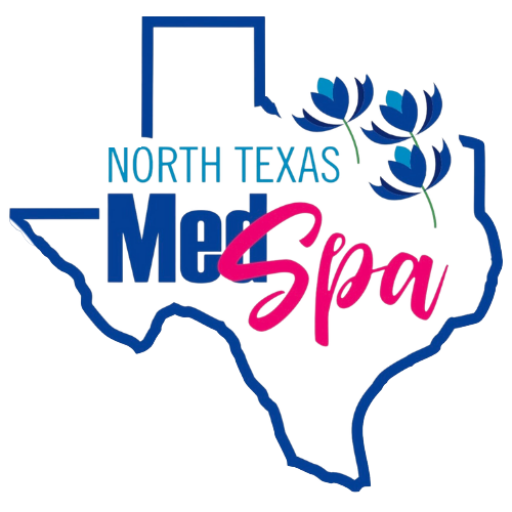Most people think of acne as being a teenage problem. However, many adults in their 30s, 40s, and even older still struggle with acne or experience it for the first time later in life. Adult acne can be frustrating, but many treatments and facials for acne will keep your skin clean, clear, and beautiful.
To best treat acne, it starts with understanding why it happens.
Why Acne Happens at Any Age
Acne occurs when hair follicles become clogged with oil, dead skin cells, and bacteria. This leads to inflammation, which can cause the pimples, cysts, and blackheads we associate with acne.
While teenagers experience acne due to fluctuating hormones during puberty, hormonal changes can trigger acne at any point in life.
In adults, acne often occurs due to hormone fluctuations caused by life stages such as pregnancy, menopause, general aging, or even stress. Men can experience it, too. These hormonal shifts can lead to an increase in oil production and inflammation, making the skin more prone to breakouts.
Additionally, lifestyle factors like diet, stress, and sleep patterns, along with the use of certain skincare products, can also contribute to acne.
Finally, sometimes, what appears to be acne might actually be something else. Conditions like rosacea, keratosis pilaris, staphylococcal (Staph) infections, and many others can all mimic acne. If you don’t have a history of breakouts or your issue isn’t responding to treatment, you should consider seeing a dermatologist.
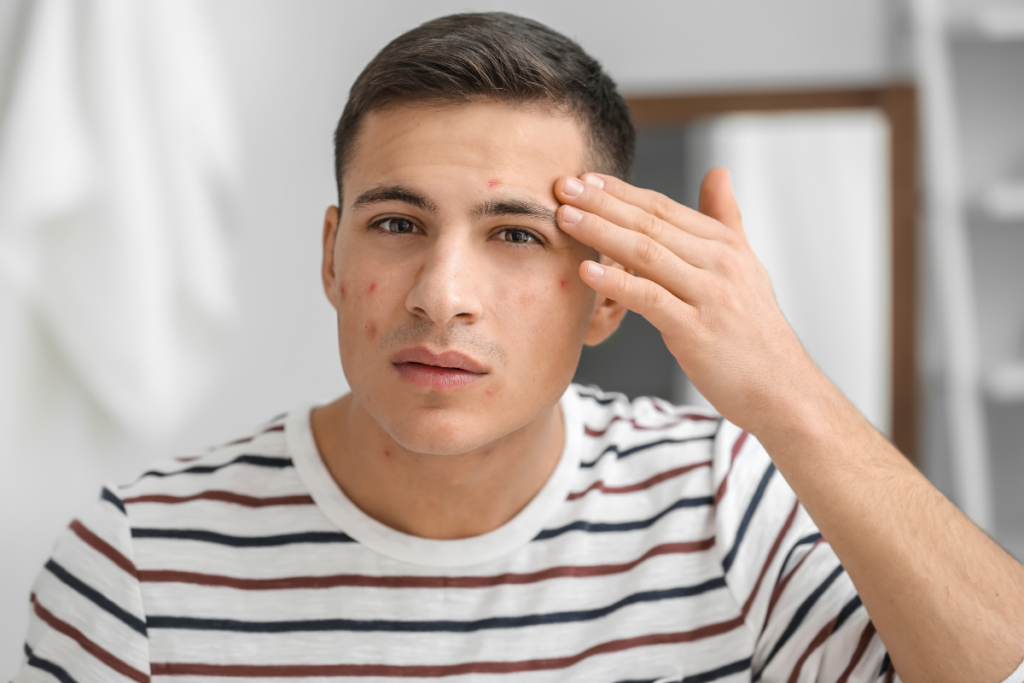
MedSpa Facials for Acne Treatment
Regular facials can play a vital role in treating and preventing acne by targeting oil production, bacteria, and inflammation. Some of the most common facials for acne treatment include:
- Deep Cleansing Facial: This facial uses steam to open up pores, followed by a deep cleanse to remove impurities. Extractions may be performed to clear clogged pores, reducing the likelihood of future breakouts. It’s excellent for those experiencing blackheads and whiteheads.
- Chemical Peels: Chemical peels exfoliate the skin, helping to remove dead skin cells and reduce the clogging of pores. For acne, salicylic acid or glycolic acid peels are commonly used. These treatments can also improve the appearance of acne scars over time.
- LED Light Therapy: Blue LED light is known to kill acne-causing bacteria while reducing inflammation. Red LED light promotes healing, making this therapy a great option for people with active breakouts and acne-prone skin.
- HydraFacial: This facial is a popular choice for acne because it combines exfoliation, hydration, and extraction in one treatment. It helps to deeply cleanse the skin while infusing it with hydrating serums, making your skin cleaner and healthier without aggravating acne.
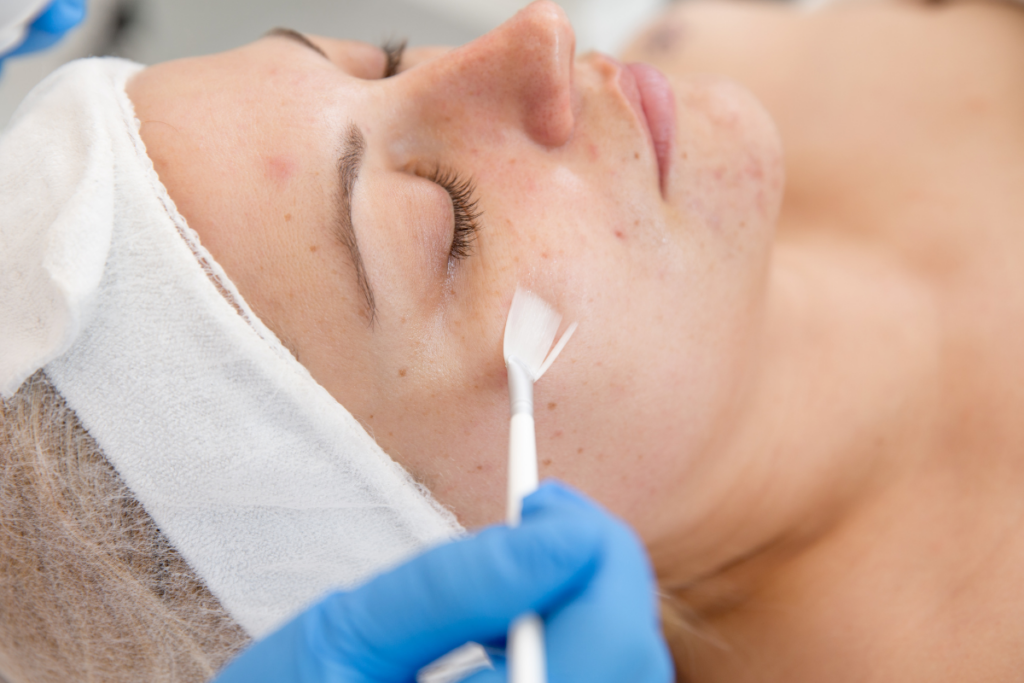
Treating Redness and Acne Scarring
One of the most devastating aspects of acne for many is that it can leave behind redness and scarring, even after the breakouts have cleared. Being careful not to pop or touch pimples and using clean tools can prevent it to an extent. But sometimes, scarring still happens.
MedSpa treatments can reduce these marks and help your skin heal and look smoother.
- Microchanneling: This treatment creates tiny micro-injuries in the skin, stimulating collagen production and helping to reduce the appearance of acne scars and improve skin texture. It’s highly effective for minimizing pitted scars.
- Laser Resurfacing: For more stubborn acne scars, laser treatments can help resurface the skin, smoothing out scar tissue and encouraging the growth of new, healthy skin.
- IPL (Intense Pulsed Light) Therapy: This treatment helps reduce post-acne redness and hyperpigmentation by targeting the blood vessels under the skin and promoting an even skin tone.
At-Home Facials and Treatments for Acne
While professional facials are powerful, there are also steps you can take at home to manage acne.
- Clay Masks: Clay masks, especially those containing bentonite or kaolin, can absorb excess oil and draw out impurities from the skin. Use these once a week for best results.
- Exfoliating Pads: Glycolic or salicylic acid pads can help remove dead skin cells that clog pores. Be sure not to over-exfoliate, which can irritate the skin and worsen acne.
- Hydrating Serums: While acne-prone skin often feels oily, hydration is still essential. Look for non-comedogenic hydrating serums with ingredients like hyaluronic acid to keep your skin balanced.
- Spot Treatments: When selecting a spot treatment for acne, look for ingredients that target bacteria, inflammation, and excess oil without irritating the skin.
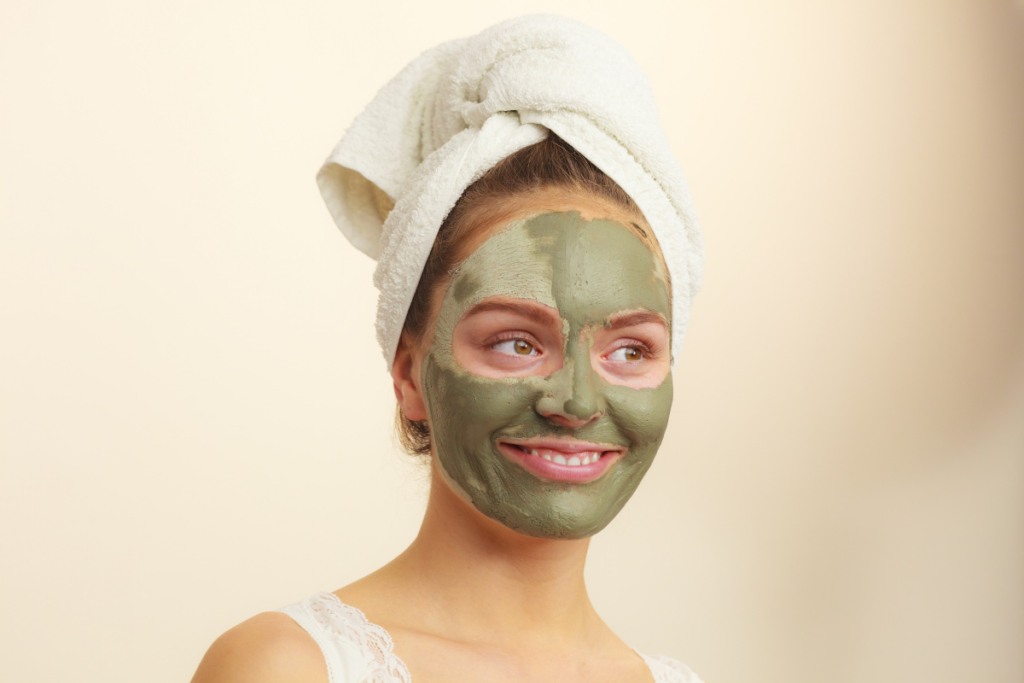
Best Acne-Fighting Ingredients
These common ingredients are found in cleansers, toners, lotions, spot treatments, and serums. You may need to experiment to find the right ones for your skin and acne issues. However, whether singly or combined, these powerful ingredients will help treat and prevent acne for almost everybody.
- Benzoyl Peroxide — This powerful ingredient kills acne-causing bacteria and helps reduce inflammation. It’s fantastic for reducing the size of pimples overnight but can be drying, so it’s best used sparingly.
- Salicylic Acid — This beta-hydroxy acid (BHA) exfoliates the skin and penetrates the pores to clear out dead skin cells and excess oil. It is a go-to for treating and preventing acne, particularly blackheads and whiteheads.
- Sulfur — Known for reducing excess oil and bacteria, sulfur is gentler than benzoyl peroxide and can be a good option for sensitive skin prone to acne.
- Tea Tree Oil — A natural alternative to benzoyl peroxide, tea tree oil has antibacterial properties that help clear acne. It’s a good option for those looking for more natural skincare options.
- Azelaic Acid — This ingredient helps to kill bacteria and reduce the appearance of post-inflammatory hyperpigmentation (dark spots) left behind after a breakout. It’s ideal for sensitive skin as well.
- Niacinamide — Known for its anti-inflammatory properties, niacinamide can help soothe irritated skin and reduce redness associated with acne, making it a great complement to harsher ingredients.
- Retinoids — These Vitamin A derivatives increase cell turnover and prevent pores from becoming clogged, making them an excellent option for treating both acne and aging skin. However, they can be irritating at first, so start slowly.
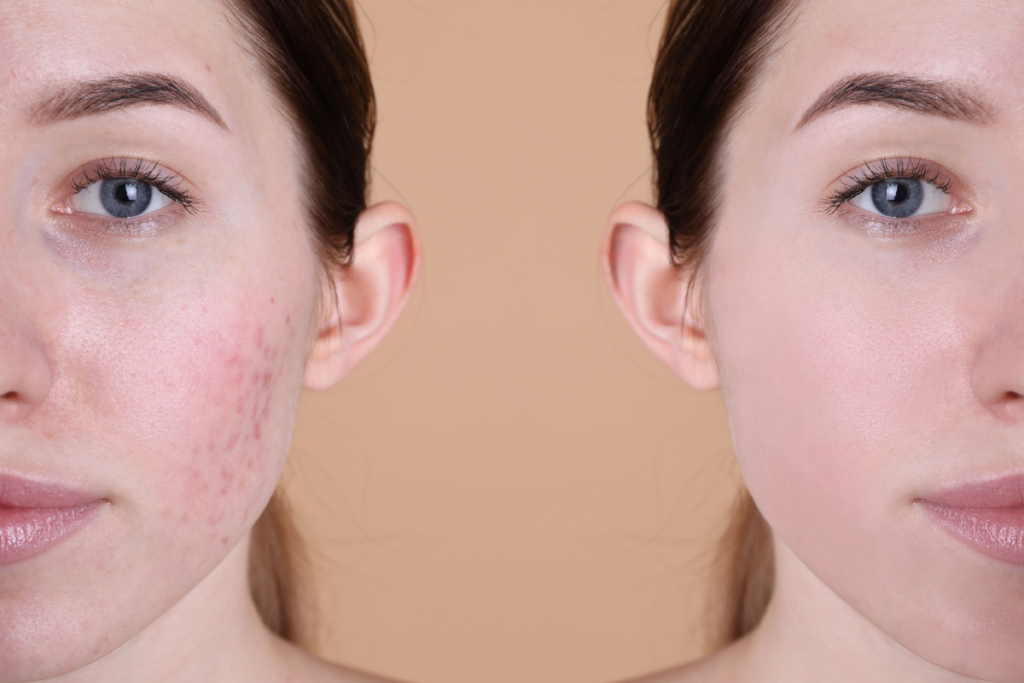
Customized Treatments and Facials for Acne
Acne can feel like an ongoing battle, but the right combination of professional treatments and at-home care can keep your skin clear and vibrant. Whether you’re dealing with hormonal breakouts or looking to minimize the appearance of scars, there’s a treatment plan that can work for you.
If you’re unsure where to start, schedule a free consultation today. With a scan and visual assessment of your skin and health history, we can recommend the best and most personalized approach for your skin type and lifestyle.
